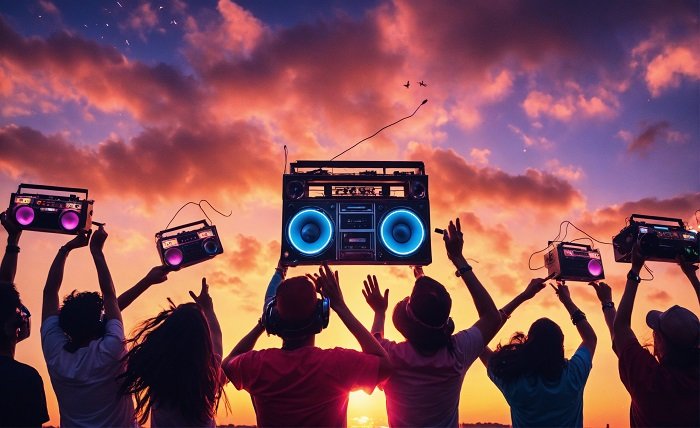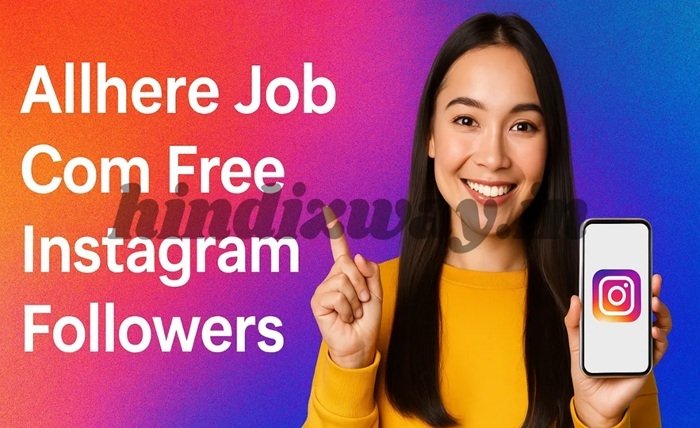ThrowbackThursday: More Than Just a Hashtag – The Digital Art of Memory
In the relentless, ever-scrolling present of social media, there exists a weekly anchor to the past—a gentle, collective pause to remember. This phenomenon is known as Throwback Thursday, a digital tradition that has evolved from a niche hashtag into a global language of nostalgia. Every Thursday, millions of users across Instagram, Facebook, Twitter, and beyond dig into their digital (and physical) archives to share a piece of their personal history. But Throwback Thursday is far more than just a trend; it’s a fascinating social ritual that speaks to our fundamental human need to connect with our past, share our stories, and shape our identity. This deep dive will explore the origins, psychology, and best practices of Throwback Thursday, proving why this weekly event remains a cornerstone of our online culture.
The Accidental Origin Story: How Did Throwback Thursday Start?
Unlike many viral trends engineered by brands or algorithms, the rise of Throwback Thursday was organic and community-driven. Its origins are somewhat murky, with multiple claims to its inception, but the most widely accepted history points to a blogger and photographer named Bobby Neal. Around 2006, Neal began using the phrase “Throwback Thursday” to share old music and memories on his blog. The concept was simple: dedicate a day to looking back. The practice slowly percolated through online communities, particularly on sports forums where fans would share vintage memorabilia and game highlights for their weekly Throwback Thursday posts.
The real catalyst for its global takeover, however, was the marriage of this concept to the emerging power of the hashtag on social media platforms. As Instagram grew in popularity in the early 2010s, the visual nature of the platform made it the perfect home for Throwback Thursday. The hashtag #TBT provided a simple, unified way to categorize and discover these nostalgic posts. What started as a trickle became a flood. The ritual was easy to participate in, universally understandable, and emotionally rewarding. Thus, Throwback Thursday transitioned from an inside joke among niche internet communities to a mainstream social media staple, demonstrating how a simple idea can capture the collective imagination.
The Psychology of Nostalgia: Why We Can’t Resist a Good #TBT
Why has Throwback Thursday become such an enduring and powerful force? The answer lies deep within our psychology, in a complex emotion known as nostalgia. Far from being simply a longing for the past, nostalgia serves several crucial emotional functions. When we participate in Throwback Thursday, we are not just posting a picture; we are engaging in a act of self-soothing and identity-building. Neuroscientific studies have shown that reflecting on positive memories can trigger the release of dopamine and endorphins, the brain’s “feel-good” chemicals, effectively giving us a mild mood boost.
Furthermore, Throwback Thursday acts as a narrative tool. Our lives can often feel fragmented and chaotic. By curating and sharing memories from our past, we are actively constructing a coherent life story. We are the authors of our own histories, and Throwback Thursday provides a weekly chapter. It allows us to connect our past selves to our present identity, creating a sense of continuity and purpose. In a world of constant change, this link to a familiar past provides comfort and stability. Sharing this narrative through a Throwback Thursday post also fosters social bonding, as it allows others to understand our journey and relate to our experiences.
Beyond the Selfie: The Many Faces of Throwback Thursday Content
The beauty of Throwback Thursday is its incredible versatility. While childhood photos and awkward teenage yearbook pictures are classic staples, the scope of content is vast and limited only by one’s archive. Common categories of Throwback Thursday posts include family history, featuring scanned photos of parents or grandparents in their youth, which often carries a powerful emotional weight for a wider audience. Another popular theme is travel throwbacks, where users revisit photos from unforgettable trips, allowing them to re-live the adventure and inspire their followers.
Brands and artists have also masterfully co-opted Throwback Thursday to showcase their evolution. A company might share its first logo or product prototype, while a musician might share early demo tapes or concert flyers. This “origin story” content humanizes brands and creates a powerful connection with their audience. Furthermore, cultural Throwback Thursday posts that highlight fashion trends, blockbuster movies, or iconic gadgets from a specific era spark a wave of shared, collective nostalgia among a generation. This variety ensures that the Throwback Thursday feed is always a diverse and fascinating tapestry of personal and shared history.
Crafting the Perfect Post: A Guide to Throwback Thursday Excellence
Anyone can post an old photo, but mastering the art of the Throwback Thursday post requires a bit more thought and strategy. The first and most crucial step is selecting the right photo. The best Throwback Thursday images are high-quality (or charmingly low-quality in a retro way), emotionally resonant, and tell a clear story. They should evoke a feeling—whether it’s joy, humor, sentimentality, or awe. Once you’ve chosen your visual artifact, the next step is crafting the caption. This is where your Throwback Thursday post transforms from a picture into a story.
A great caption provides context. Where were you? Who are you with? What was happening? What does this memory mean to you now? Don’t be afraid to be vulnerable or humorous. Asking your followers a question, like “What were you listening to in 2005?” can also boost engagement. Finally, don’t forget the technicalities: use relevant hashtags. #TBT is the non-negotiable standard, but #ThrowbackThursday, #FlashbackFriday (if you’re posting a day late!), and more specific tags like #90sKids or #FamilyThrowback can extend your post’s reach. A well-executed Throwback Thursday post is a mini-story that invites your audience into a moment of your life.
The Ethics of the Throwback: Navigating Privacy and Permission
As with any activity that involves sharing personal history, Throwback Thursday comes with its own set of ethical considerations. The most important of these is permission. Before you post a photo featuring other people, especially from a time before social media was ubiquitous, it is courteous and responsible to ask for their consent. The person in that embarrassing photo from a college party might not share your nostalgia for the moment. Respecting their privacy is paramount, even if it means forgoing a potentially viral Throwback Thursday post.
Furthermore, it’s wise to consider the narrative you’re crafting. While it’s healthy to reflect on the past, constantly glorifying “the good old days” can sometimes be a way of avoiding present challenges. The healthiest approach to Throwback Thursday is to use it as a celebration of how far you’ve come, not as an escape from where you are now. Be mindful of the tone and message your post sends. A responsible and thoughtful approach ensures that your participation in Throwback Thursday remains a positive force for both you and your audience.
From Personal to Powerful: How Brands Master Throwback Thursday
For businesses and influencers, Throwback Thursday is not just a fun trend; it’s a strategic marketing tool with immense potential. When done authentically, a brand’s Throwback Thursday campaign can build incredible loyalty and humanize its image. It’s a chance to showcase heritage, highlight longevity, and tell the brand’s origin story. A classic example is a company sharing a photo of its first-ever storefront or its founders working in a garage, which builds a narrative of passion and grit.
Brands can also use Throwback Thursday to engage their audience directly. User-generated content campaigns that encourage followers to share their own throwbacks using the product—like an old photo with their first-ever sneakers from the brand—create a powerful sense of community and belonging. It’s a brilliant way to generate authentic content and demonstrate that the brand is woven into the lives of its customers. The key for brands is to avoid being overly salesy; the focus should be on authenticity and nostalgia, not promotion. A successful corporate Throwback Thursday post feels like a genuine shared memory, not an advertisement.
The Future of Looking Back: Where Does Throwback Thursday Go From Here?
As technology evolves, so too will the nature of Throwback Thursday. We are already moving from sharing scanned physical photos to sharing digital images from a decade ago. Soon, our Throwback Thursday content may originate from even richer sources. Imagine sharing a 360-degree VR throwback to a wedding or a concert, or a “memory highlight reel” automatically generated by an AI that curates your best moments from a past year. The line between past and present will become even more blurred.
However, the core appeal of Throwback Thursday will remain unchanged. No matter how advanced the medium, the human desire to connect with our past, to share our stories, and to feel a sense of continuity will always be there. Throwback Thursday has successfully digitized and democratized this ancient human practice. It has given us a structured, shared way to honor our memories every week. As long as we continue to create memories worth remembering, we will continue to have a reason to participate in the weekly ritual of Throwback Thursday.
Conclusion
Throwback Thursday is far more than a social media gimmick. It is a cultural touchstone, a psychological tool, and a modern storytelling format all rolled into one. From its humble beginnings in niche online forums to its current status as a global weekly event, #TBT has proven its staying power. It allows us to practice nostalgia, build our personal narratives, and connect with others on a deeper level. Whether you’re sharing a faded family photo, a brand’s history, or just a hilarious fashion misstep, you are participating in a shared human experience. So this Thursday, embrace the past. Dive into those archives, craft your story, and join the millions in celebrating the beautiful, messy, and unforgettable journey that got us all to where we are today.
FAQs
1. What’s the difference between #TBT and #FBF (Flashback Friday)?
Functionally, they are used interchangeably to share old memories. #TBT (Throwback Thursday) is the original and most popular hashtag. #FBF (Flashback Friday) emerged as an alternative for people who missed posting on Thursday. The content strategy for both is identical.
2. How old should a photo be to qualify as a Throwback Thursday post?
There’s no official rule! While many posts are from years or decades ago, even a photo from a few months ago can work if it represents a significantly different time (e.g., pre-pandemic, a past season, or before a big life change). The spirit of Throwback Thursday is about nostalgia, not a strict timeline.
3. Is it okay to post a Throwback Thursday on another day?
While it’s best practice to post on Thursday to align with the hashtag and maximize engagement, you can post a throwback any day. If you post on Friday, using #FBF or #FlashbackFriday is common. Posting on another day might just require a slightly different caption to frame the nostalgic content.
4. Can businesses that are new still participate in Throwback Thursday?
Absolutely. Even a new business can share the founder’s story, early concept sketches, or photos from the development phase. The goal is to show the journey and human behind the brand, not just the age of the company. This builds authenticity and connects with the audience on a personal level.
5. What if I don’t have any old photos to share for Throwback Thursday?
Not everyone has a vast archive of old pictures, and that’s okay! You can still participate by sharing a memory in text form, a song that reminds you of a specific time, or even a throwback to a digital memory like an old social media post or a viral news story from the past. The sentiment is what matters most.




